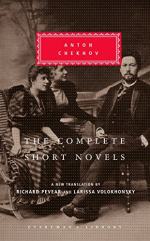|
This section contains 518 words (approx. 2 pages at 400 words per page) |

|
Yulia’s parasol
Yulia’s parasol symbolizes the early days of their love. When Laptev first beholds Yulia’s forgotten parasol, he is overjoyed: “Laptev opened it and held it over him, and it seemed to him that there was even a smell of happiness around him” (341). Later on, Laptev cites this as the only time he felt truly happy in his life.
The Laptevs’ warehouse
The Laptevs’ warehouse represents the cruelty of the merchant class. In the warehouse, employees are exploited and miserable. Old Fyodor Stepanych’s willful ignorance regarding these poor working conditions illustrates the disconnect between the wealthy merchant class and the poorer working people.
Art
Art—whether it be music, painting, or literature—represents an escape from reality. Nearly each character in the novella clings to one of these to try and create distance between themselves and their official occupations. One example of...
|
This section contains 518 words (approx. 2 pages at 400 words per page) |

|




